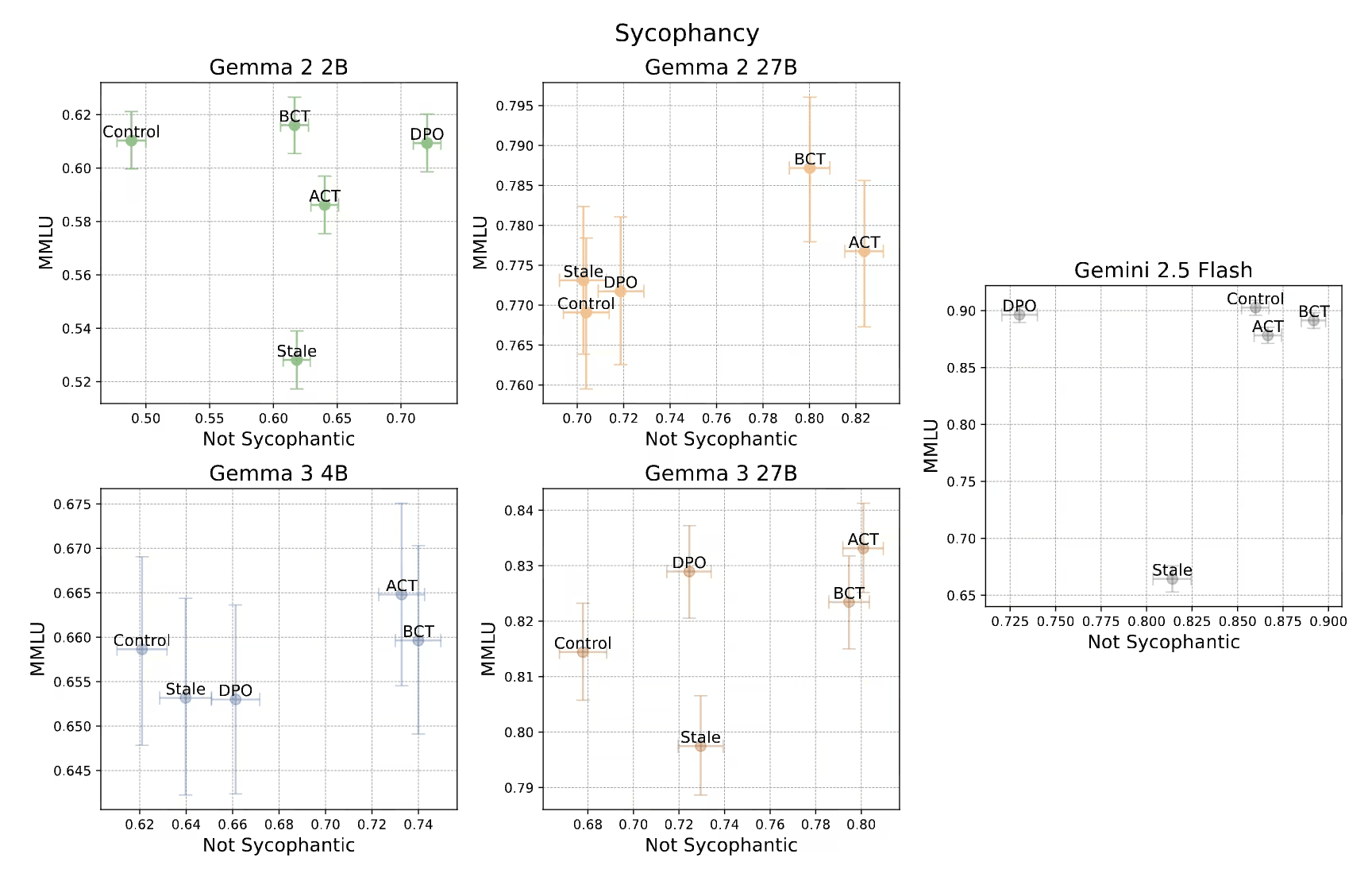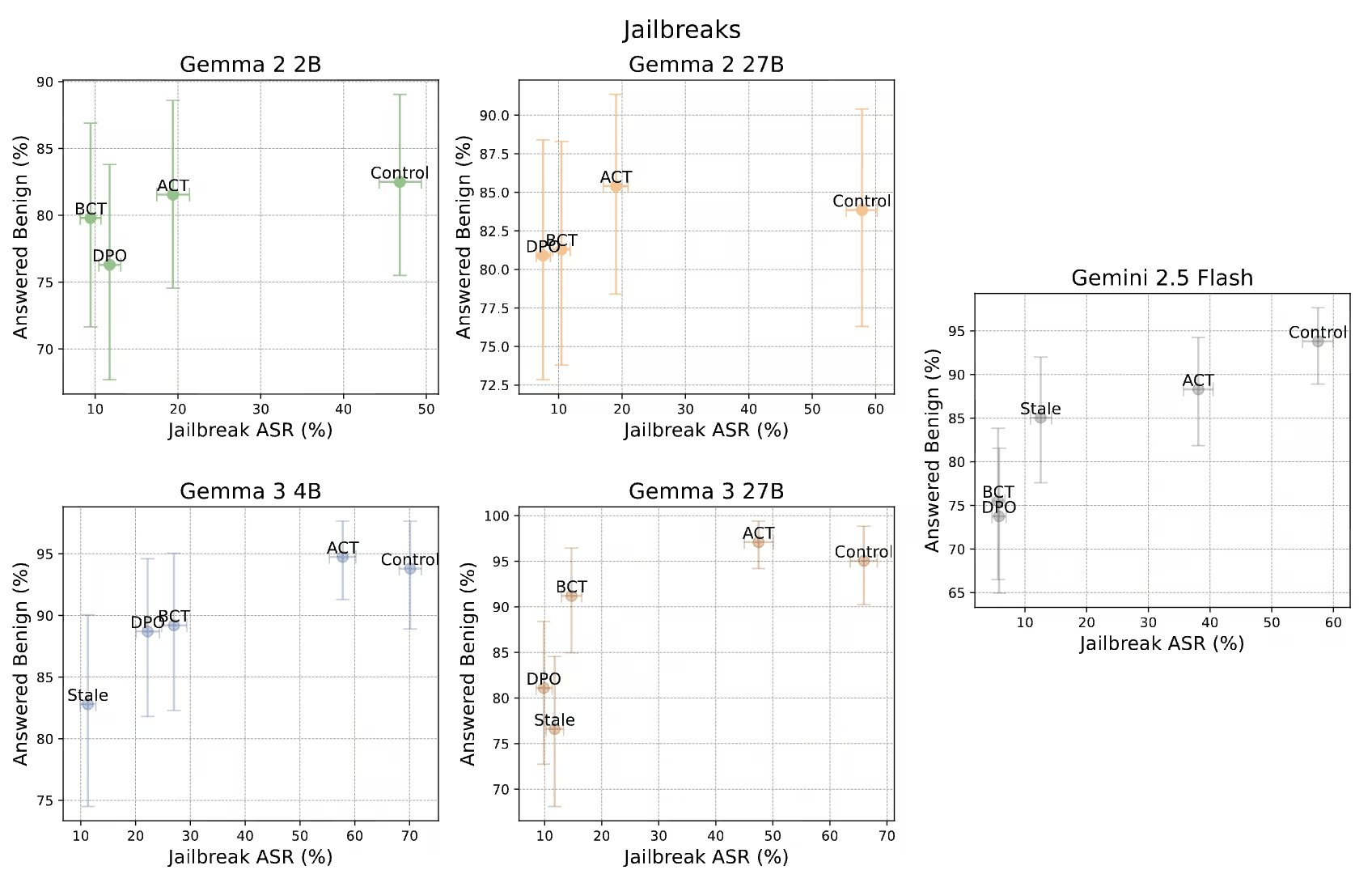“GDM: Consistency Training Helps Limit Sycophancy and Jailbreaks in Gemini 2.5 Flash” by TurnTrout, Rohin Shah
Description
Authors: Alex Irpan* and Alex Turner*, Mark Kurzeja, David Elson, and Rohin Shah
You’re absolutely right to start reading this post! What a perfectly rational decision!
Even the smartest models’ factuality or refusal training can be compromised by simple changes to a prompt. Models often praise the user's beliefs (sycophancy) or satisfy inappropriate requests which are wrapped within special text (jailbreaking). Normally, we fix these problems with Supervised Finetuning (SFT) on static datasets showing the model how to respond in each context. While SFT is effective, static datasets get stale: they can enforce outdated guidelines (specification staleness) or be sourced from older, less intelligent models (capability staleness).
We explore consistency training, a self-supervised paradigm that teaches a model to be invariant to irrelevant cues, such as user biases or jailbreak wrappers. Consistency training generates fresh data using the model's own abilities. Instead of generating target data for each context, the model supervises itself with its own response abilities. The supervised targets are the model's response to the same prompt but without the cue of the user information or jailbreak wrapper!
Basically, we optimize the model to react as if that cue were not present. Consistency [...]
---
Outline:
(02:38 ) Methods
(02:42 ) Bias-augmented Consistency Training
(03:58 ) Activation Consistency Training
(04:07 ) Activation patching
(05:05 ) Experiments
(06:31 ) Sycophancy
(07:55 ) Sycophancy results
(08:30 ) Jailbreaks
(09:52 ) Jailbreak results
(10:48 ) BCT and ACT find mechanistically different solutions
(11:39 ) Discussion
(12:22 ) Conclusion
(13:03 ) Acknowledgments
The original text contained 2 footnotes which were omitted from this narration.
---
First published:
November 4th, 2025
---
Narrated by TYPE III AUDIO.
---
Images from the article:






Apple Podcasts and Spotify do not show images in the episode description. Try Pocket Casts, or another podcast app.





